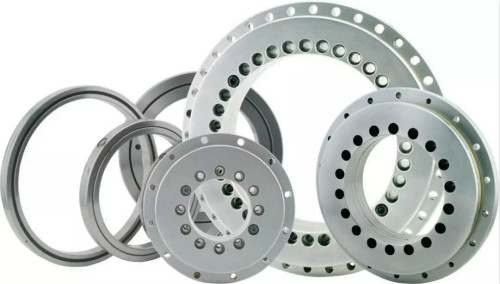The early failure forms of rolling bearings mainly include fracture, plastic deformation, wear, corrosion and fatigue, and contact fatigue is the main failure forms under normal conditions. In addition to service conditions, the failure of bearing parts is mainly restricted by the hardness, strength, toughness, wear resistance, corrosion resistance and internal stress state of steel. The main internal factors that affect these performance and states are as follows.
1.In order to make the material factors affecting the bearing life in the best state, the original structure of the steel before quenching needs to be controlled first. Technical measures can be taken: high temperature (1050℃) austenitization rate cooling to 630℃ isothermal normalizing to obtain pseudoeutectoid fine pearlite structure, or cold to 420℃ isothermal treatment to obtain bainite structure. In order to ensure the fine and uniform distribution of carbides in steel, it is also possible to obtain fine granular pearlite structure by fast annealing of waste heat of forging and rolling. In this state of the original structure in quenching heating austenitization, in addition to the carbide dissolved in the austenite, the undissolved carbide will aggregate into fine particles.
2.When the original organization must be in the steel, the carbon content of quenched martensite (that is, the austenite after quenching heating carbon content), the residual austenite and the body not dissolve carbide mainly depends on the amount of quenching heating temperature and holding time, with higher quenching heating temperature (a), not dissolve the decrease in the number of carbide in steel (quenching martensite increased carbon content), the number of retained austenite increase, The hardness firstly increases with the increase of quenching temperature, and then decreases with the increase of temperature after reaching the peak value. When the quenching temperature is constant, with the extension of austenitizing time, the amount of undissolved carbide decreases, the amount of residual austenite increases, the hardness increases, when the time is longer, this trend slows down. When the carbide in the original structure is small, the carbide is easy to dissolve into the austenite, so the hardness peak after quenching shifts to a lower temperature and appears in a shorter austenitizing time.
3.In conclusion, the optimum microstructure of GCrl5 steel after quenching is about 7% of undissolved carbide and 9% of residual austenite (the average carbon content of apnetic martensite is about 0.55%). Moreover, when the carbide is fine and evenly distributed in the original structure, it is beneficial to obtain high comprehensive mechanical properties and high service life when the microstructure composition of the above level is controlled reliably. It should be pointed out that in the original structure with fine dispersed carbides, the undissolved fine carbides will aggregate and grow up during quenching and heat preservation, resulting in coarsening. Therefore, for the bearing parts with such original structure, the quenching heating time should not be too long, and the rapid heating austenitizing quenching process can obtain higher comprehensive mechanical properties.
4.In order to make the bearing parts remain large compressive stress on the surface after quenching and tempering, the carburizing or nitriding atmosphere can be permeated during quenching and heating to carry out a short time of surface carburizing or nitriding. Since the actual carbon content of the austenite when the steel is quenched and heated is not high, far below the equilibrium concentration shown on the phase diagram, it can absorb carbon (or nitrogen). When the austenite contains higher carbon or nitrogen, the Ms decreases, and the martensite transformation occurs in the surface layer compared with the inner layer and the heart during quenching, resulting in a larger residual compressive stress. The contact fatigue test shows that the life of GCrl5 steel with carburized surface is 1.5 times higher than that without carburized surface after heating and quenching in carburized atmosphere and non-carburized atmosphere (both are tempered at low temperature). The reason is that the surface of the carburized parts has a large residual compressive stress.
The main material factors affecting the service life of high carbon chromium steel rolling bearing parts and the degree of control are:

If you have any questions of bearings,pls feel free to contact us.
E-mail:bearing6@hyzcgroup.com
- YRT rotary table bearing
- YRTS rotary table bearing (high speed series)
- YRTM with integral angular measuring system series
- ZKLDF axial angular contact ball bearing series
- RA series crossed roller bearing
- SX series crossed roller bearing
- CRBH series crossed roller bearing
- RE series crossed roller bearing
- RU series crossed roller bearing
- RB series crossed roller bearing
- XR/JXR series crossed taper roller bearing
- Crossed roller bearing

✉️ bearing20@hyzcgroup.com
📞 +86 15236685001





